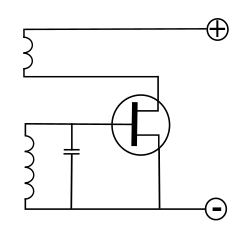Hazards of electricity :
The primary hazards associated with electricity and its use are:
1- SHOCK. Electric shock occurs when the human body becomes part of a path through which electrons can flow. The resulting effect on the body can be either direct or indirect.
- Direct. Injury or death can occur whenever electric current flows through the human body. Currents of less than 30 mA can result in death. A thorough coverage of the effects of electricity on the human body is contained in the section of this module entitled Effects of Electricity on the Human Body.
- Indirect. Although the electric current through the human body may be well below the values required to cause noticeable injury, human reaction can result in falls from ladders or scaffolds, or movement into operating machinery
2- BURNS. Burns can result when a person touches electrical wiring or equipment that is improperly used or maintained. Typically, such burn injuries occur on the hands.
3- ARC-BLAST. Arc-blasts occur from high-amperage currents arcing through air. This abnormal current flow (arc-blast) is initiated by contact between two energized points. This contact can be caused by persons who have an accident while working on energized components, or by equipment failure due to fatigue or abuse. Temperatures as high as 35,000oF have been recorded in arc-blast research. The three primary hazards associated with an arc-blast are:
- Thermal Radiation. In most cases, the radiated thermal energy is only part of the total energy available from the arc. Numerous factors, including skin color, area of skin exposed, type of clothing have an effect on the degree of injury. Proper clothing, work distances and overcurrent protection can improve the chances of curable burns.
- Pressure Wave. A high-energy arcing fault can produce a considerable pressure wave. Research has shown that a person 2 feet away from a 25 kA arc would experience a force of approximately 480 pounds on the front of their body. In addition, such a pressure wave can cause serious ear damage and memory loss due to mild concussions. In some instances, the pressure wave may propel the victim away from the arc-blast, reducing the exposure to the thermal energy. However, such rapid movement could also cause serious physical injury.
- Projectiles. The pressure wave can propel relatively large objects over a considerable distance. In some cases, the pressure wave has sufficient force to snap the heads of 3/8 inch steel bolts and knock over ordinary
construction walls. The high-energy arc also causes many of the copper and aluminum components in the electrical equipment to become molten. These "droplets" of molten metal can be propelled great distances by the pressure wave. Although these droplets cool rapidly, they can still be above temperatures capable of causing serious burns or igniting ordinary clothing at distances of 10 feet or more. In many cases, the burning effect is much worse than the injury from shrapnel effects of the droplets.
- Pressure Wave. A high-energy arcing fault can produce a considerable pressure wave. Research has shown that a person 2 feet away from a 25 kA arc would experience a force of approximately 480 pounds on the front of their body. In addition, such a pressure wave can cause serious ear damage and memory loss due to mild concussions. In some instances, the pressure wave may propel the victim away from the arc-blast, reducing the exposure to the thermal energy. However, such rapid movement could also cause serious physical injury.
- Projectiles. The pressure wave can propel relatively large objects over a considerable distance. In some cases, the pressure wave has sufficient force to snap the heads of 3/8 inch steel bolts and knock over ordinary
construction walls. The high-energy arc also causes many of the copper and aluminum components in the electrical equipment to become molten. These "droplets" of molten metal can be propelled great distances by the pressure wave. Although these droplets cool rapidly, they can still be above temperatures capable of causing serious burns or igniting ordinary clothing at distances of 10 feet or more. In many cases, the burning effect is much worse than the injury from shrapnel effects of the droplets.
4- EXPLOSIONS. Explosions occur when electricity provides a source of ignition for an explosive mixture in the atmosphere. Ignition can be due to overheated conductors or equipment, or normal arcing (sparking) at switch contacts. OSHA standards, the National Electrical Code and related safety standards have preciserequirements for electrical systems and equipment when applied in such areas.
5- FIRES. Electricity is one of the most common causes of fire both in the home and workplace. Defective or misused electrical equipment is a major cause, with high resistance connections being one of the primary sources of ignition. High resistanceconnections occur where wires are improperly spliced or connected to other components such as receptacle outlets and switches. This was the primary cause of fires associated with the use of aluminum wire in buildings during the 1960s and 1970s. Heat is developed in an electrical conductor by the flow of current at the rate I2R. The heat thus released elevates the temperature of the conductor material. A typical use of this formula illustrates a common electrical hazard. If there is a bad connection at a receptacle, resulting in a resistance of 2 ohms, and a current of 10 amperes flows through that resistance, the rate of heat produced (W) would be:
W = I ^2R = 10^2 x 2 = 200 watts
If you have ever touched an energized 200 watt light bulb, you will realize that this is a lot of heat to be concentrated in the confined space of a receptacle. Situations similar to this can contribute to electrical fires.










 . In a practical circuit, the actual oscillation frequency will be slightly different from the value provided by this formula because of stray capacitance and inductance, internal losses (resistance), and the loading of the tank circuit by the tickler coil.
. In a practical circuit, the actual oscillation frequency will be slightly different from the value provided by this formula because of stray capacitance and inductance, internal losses (resistance), and the loading of the tank circuit by the tickler coil.










